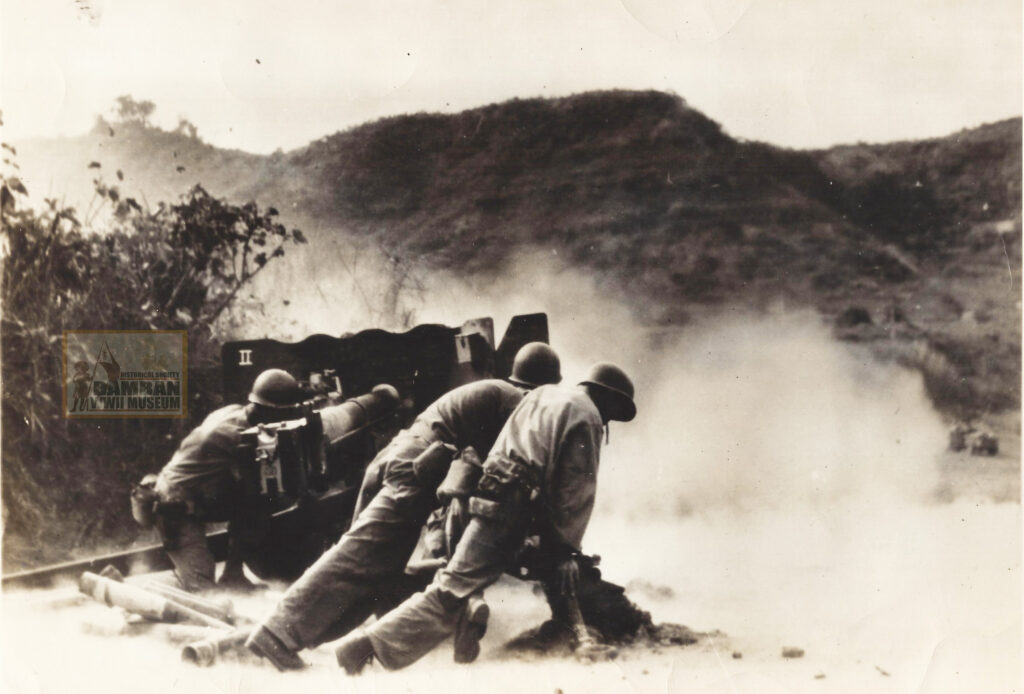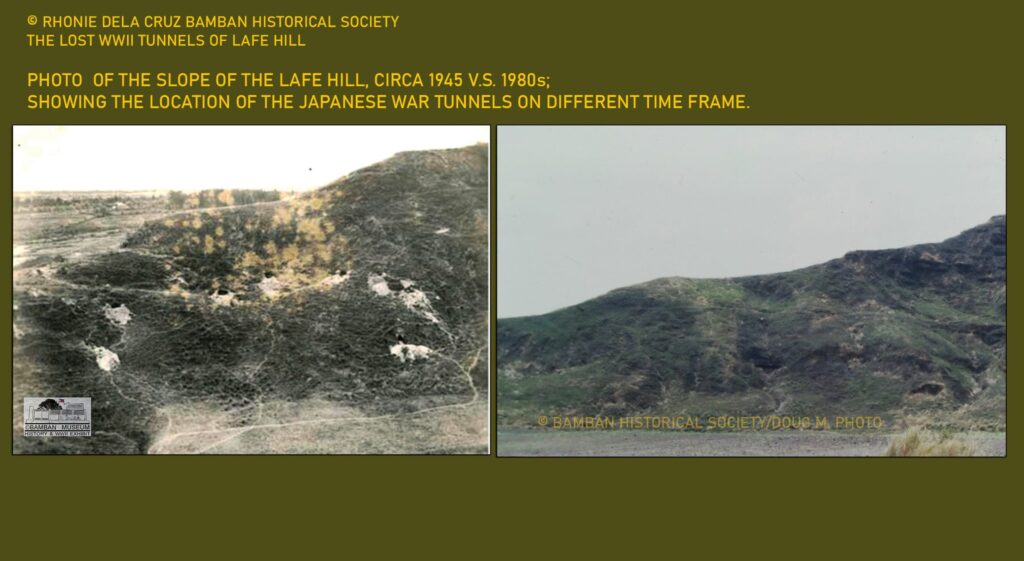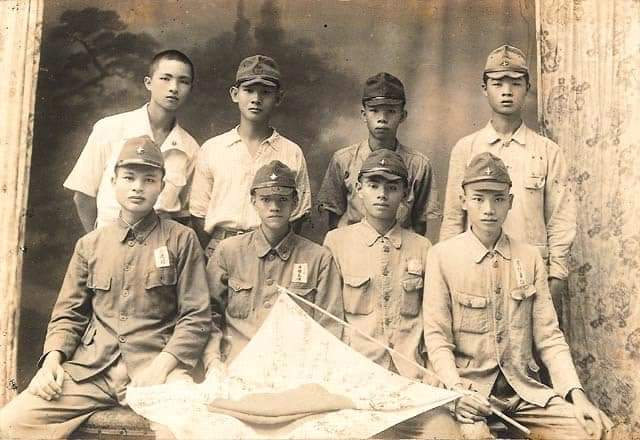
AMERICAN 40th DIVISION GUN BLAST JAPANESE POSITION ON BAMBAN HILLS, JANUARY 1945.
1945年1月、バンバン丘陵の日本軍トンネルに向けて発砲するアメリカ軍の砲兵隊。
Bamban and Bamban Hills combat operations by the 40th Division U.S. Army has the distinction of having the numbers of combat photographs taken by the division and the U.S. Army Signal Corps in the M1 Luzon Operation. And since this year, we are commemorating the 80th Anniversary Of Liberation, it is just proper that we at Bamban WWII Museum and Bamban Historical Society highlight the images of fighting and struggle of the Filipino and American soldiers and the events that took place in this town that became one of the fiercest fights and battlefields in WWII in the Philippines due to the occupation of the Japanese Kembu Group composite division.
After the Liberation of Bamban on January 23, 1945 by the 160th Infantry, 40th Division that had cleared the town center and the Bamba Airfield located to the east of the town, the following days will be the campaign against the Japanese Kembu Group holed on the rugged terrain on the series of nose ridges overlooking the town and the highway going down to Manila and Clark.
When the main body of the 40th Division reached Bamban on the morning of January 23, 1945, the 160th Infantry, in charge of clearing any enemy obstacles and positions in the town on the west consisting of the nose-ridges overlooking the highway, they found the most elaborate series of Japanese tunnel complex that would challenge the American forces on their drive to the south.
With mutual fire on each side of the hill-mass and ridges, clearing the Japanese tunnel defense system in Bamban Hills, the sector overlooking the town held by the Takayama Detachment, comprising of almost 3,000 men from the 2nd Mobile Infantry Regiment and reinforced by numerous units including artillery, anti-tank and cannon and naval auxiliary unit, posed a greater challenge for the division that required the most careful planning to reduce the opposition to include the use of aerial bombardments from the 5th Air Force, tanks, tank destroyers, SP 155mm and 105mm howitzers, 90mm field guns and 57mm and 37mm anti-tank guns, with the infantry as the final assault who will bear the ultimate struggle.
It would be the eve of the most bitter fights in Luzon in 1945!
In this image, combat photographer from the 40th Division and probably the Signal Corps attached to the division, was able to capture the moments when soldiers manning the M1 57mm anti-tank gun fires on Japanese position on the east side of Hill 500 (Grotto Hill), on the south banks of the Paruao River, where the smoke from the fire engulfed the surroundings with the Hill 500, fortified position of the Hoshino Battalion (137th Airfield Battalion, reinforced).
Original caption from Associated Press explains:
“US guns blast Japanese at Bamban – American 57mm guns fire on Japanese hiding in tunnels in hills at Bamban, about 6 miles north of Clark Field, Luzon, P.I., 1945”
The use of M1 57mm anti-tank guns on Japanese tunnel positions was an important tactical combat offensive in destroying the cave systems the Kembu Group employed in the mountains of Bamban and Clark area in 1945. Japanese high-ranking military officer, had this citation on the effectiveness of American anti-tank guns:
“Smoke shells fired by anti-tnk guns proved most effective against our cave positions in the Clark Field Sector.”
Col. Yasuji Okada
Chief-of-Staff
Kembu Group Composite Division
Interrogation, late 1945
Associated Press release indicated the date as January 29, 1945. However, the date should be January 24 or 25, the dates in which the 3rd Battalion, 160th Infantry, 40th Division fought the Japanese Hoshino Battalion holed at Hill 500 for a 2-day battle, hence not on the 29th.
By June 29, the campaign was already shifted to the rear, after Lafe Hill on the southwest or the site of Monikayo Mountain, where another Japanese defense, the Naval Guard, put up another resistance on the tunnel defense. To the north and northwest, the 108th Infantry, 40th Division was still battling the Kamii Battalion, on the area of Mainang, southwest of Panaisan, Sapang and Makapul, on a 5-day battle.
In the operation of the 40th Division in Bamban and Bamban Hills, our very own Bamban Battalion, Bruce Guerrillas had in support of combat engagements, patrol and reconnaissance, as well as with other Filipino guerrillas and the Aeta Negrito mountain patrol.
The image of the American soldiers firing on Bantiti – Grotto, the Japanese called Asahiyama hill complex, is a powerful image of the struggle of the war for Liberation.
Rhonie Dela Crjuz
Bamban WWII Museum
Citation:
(1) McCreedy, William Ward. Sunburst Saga – Stories From The 160th Infantry Regiment.
(2) History of the 40th Division in the Philippines.
(3) Smith, Robert Ross. United States Army in WWII – The War in the Pacific, Triumph In the Philippines.
(4) Okada, Yasuji (Colonel, Chief of Staff of the Japanese Kembu Group). Japanese Monograph No. 9. “Outline of the Kembu Group Operation – Clark Sector, Record of the Philippine Operations Record of the Philippine Operation Vol. III Part 3”
(5) New Jersey Gazette, Union City, January 29, 1945, courtesy of John Duresky.
(6) Staff Study of Japanese Operations on Luzon “Narrative of Operations in Luzon, Philippine Islands Based on Accounts Prepared by Colonel Yasuji Okada, COS, Kembu Group Composite Division, 14th Area Army”, Special Staff U.S. Army Historical Division (Historical Manuscript), File NO. 8-5, 10th Information and Historical Service, Headquarters 8th Army.


